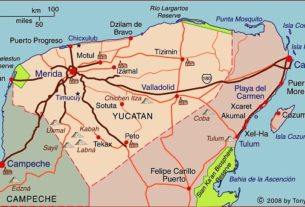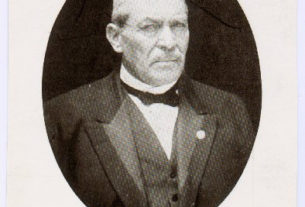Mexican History
Perhaps no people on earth have been so maligned on the one hand and so highly praised on the other as the ancient Aztecs of Mexico-Tenochtitlán. You don’t have to be a Mesoamerican scholar to have heard of the Conquest of Mexico or the horrendous numbers of hapless victims the Aztecs apparently offered to their bloodthirsty gods. Bernal Díaz del Castillo, the historian of the Conquest, expressed the wonderment of the crude Spanish soldiers when they first beheld the wonders of the Aztec capital of Tenochtitlan. This did not deter the Spaniards from destroying Aztec civilization at a crucial moment in its development and it was only later that the other side of the Aztec character was revealed and appreciated. The Aztecs, it seems, were passionately devoted to flowers and songs as well as to human sacrifice. For some researchers this gentle, artistic side of the Aztec character is expressed in the Nahuatl phrase in xochitl in cuicatl (“The Flower, the Song”), which is said to represent the art of poetry among the Aztecs, as well as other artistic activities. Two Mexican scholars, Father Angel Garibay, now deceased, and the eminent Náhuatl scholar Miguel Leon-Portilla, have been most instrumental in promoting this more aesthetic view of the ancient Aztecs. Some have indeed urged caution in this interpretation on the grounds that the western concept of “art for art’s sake” did not exist among the Aztecs, who were among the most highly ritualized people on earth. However, the existence of a large body of highly personal Náahuatl poems in Roman transcription throws an entirely different light on the matter.
Genuine revolutions in the course of scholarly investigation in any field of study are not that common. One such revolution was the discovery that the ancient Maya were not the peace-loving star-gazing Philosophers of Time that early scholars had imagined but rather a warlike people concerned with matters of political influence and dynastic succession. This radical change in thinking was brought about by the decipherment of the Maya hieroglyphic writing system. Some believe that a somewhat similar revolution is now underway in our interpretation of ancient Aztec life and thought. This is based on a proposed new reading of Aztec literature, in particular lyric poetry.
We have three important collections of Aztec lyric poetry: Cantares Mexicanos (Mexico City), Romances de los señores de Nueva España (University of Texas), and a collection located in Paris. Some of these poems are of a heroic type common in epic poetry and saga: Cuauhcuicatl (“Songs of the Eagle”), Yaocuicatl (“Songs of Warriors”), and Teuccuicatl (“Songs of Princes or Chieftains”). Other non-heroic themes include Xochicuicatl (“Songs of Flowers”), Icnocuicatl (“Songs of Desolation or Adversity”), Huehuecuicatl (“Songs of the Old Men”), and the like. The present controversy over the translation and interpretation of these poems centres for the most part on the Cantares Mexicanos, although the other collections are also involved.
The Náhuatl text of the Cantares was transcribed into Roman letters around A.D. 1550, some 30 years after the fall of Tenochtitlan in 1521. All written texts in Náhuatl naturally postdate the Spanish Conquest after which the Franciscans taught the Indians the art of writing their own language in alphabetical form. In pre-Conquest times, the oral tradition was strongly reinforced by pictographic codices or painted books, which served as “prompt” books in the transmission of what we may call Aztec literature. The post-Conquest period saw a rapid transition period from a predominantly oral society to a written literature within a generation or so. Oral literature did not entirely die out, however, and codices continued to be produced even in the Colonial period. The Cantares, therefore, falls into this transitional period between a predominantly oral society and a literary or written tradition in the western sense. It is common practice to draw a distinction between the “creative” period of an oral tradition and its transmission period. But while these are useful classifications for scholarly use, this may not have been the way in which the bards or original composers and tradition-bearers saw it. However, this is the general background history of our current text of the Cantares Mexicanos.
Up until the 1930s and ’40s when Father Garibay began to translate Náhuatl texts, pre-Columbian civilizations were known mainly by material remains, pyramids, statues, pottery, and the like. Leon-Portilla has continued the work of Garibay and together they may be said to stand for the aesthetic school of Aztec literature. On this view “Flowers and Songs” are not only poetry or art in general but also the “only truth on earth.” At the very least they bring friends together and are the only things we can be certain of in this uncertain life. The sentiments and ideas expressed in the Cantares Mexicanos and other sources of Aztec poetry would seem to represent genuine philosophical thinking on the part of the Aztecs. However not everyone agrees with this interpretation.
In 1985 and 1989, two works appeared challenging the interpretation of Garibay and Leon-Portilla, J. Bierhorst’s new edition of the Cantares Mexicanos and A. Segal’s La littérature nahuatl: sources, identitíes, représentations, in which he appears to have been influenced by Bierhorst. Some of Bierhorst’s proponents believe that his translation and interpretation, which differ so radically from the earlier versions, invalidate much of Leon-Portilla’s work. Then in 1992, S. Gruzinski published a work on the influence of Christianity and colonization on our “witnesses” (presumably such sources as Náhuatl texts) of the Aztec past. This implies that we have a false or at best misleading picture of ancient Aztec society because it has been filtered through the dominant cultural milieu of the Spanish conquerors. The ensuing debate between the Bierhorst-Segal-Gruzinski faction and the Garibay/Leon-Portilla Complex, as one particularly vociferous proponent of the new view puts it, is beginning to resemble the (in)famous Homeric controversy in which the Analysts sought to strip away alleged later additions to the Iliad and so retrieve the “original” heroic core of the epic, whereas the Unitarians strove equally hard to demonstrate that the Iliad and the Odyssey were both the work of one monumental composer. One is reminded of the Lilliputians in Gulliver’s Travels, when the Big-Endians fought the Little-Endians to decide which end of the egg one should break open first.
The controversy centres on two main issues: translation (the way in which the texts have been translated and used by historians) and historiography (conflict over the authenticity of the sources). In “Translation in Historiography: The Garibay/Leon-Portilla Complex and the Making of a Pre-Hispanic Past” (Meta, XLIX, 3.2004) G. Payas draws a sharp distinction between a professional translator and a historian who translates as a part of historical research. The historian is said to be “history-making” whereas the translator merely translates for the usage of others. Applying these criteria to Garibay and Leon-Portilla, Payas concludes that Garibay, in fact, “created” a literature for Aztec civilization. The argument goes something like this: Garibay forced the Náhuatl texts, in particular the Cantares Mexicanos, into a classical format. Then Leon-Portilla interpreted the texts to correspond with his preconceived idea of the Aztec mode of thought. In other words they “invented” pre-Columbian literature and, in so doing, presented us with an inaccurate picture of the pre-Hispanic past based on the inadvertent mishandling or the deliberate manipulation of Náhuatl texts to prove a point.
In his 1985 edition of the Cantares Mexicanos, Bierhorst interprets the poems as “ghost songs” intended to summon the spirits of dead Aztec warriors to return to earth and help their descendants under Spanish rule. On this view the phrase “The Flower, the Song” ( in xochitl in cuicatl), contrary to Leon-Portilla’s interpretation, does not refer to poetry but to a ghost ritual accompanied by song and dance. Personified songs reach the earth as souls. Ghosts descend from heaven, fully armed and ready to fight on behalf of the oppressed Indians. As warriors, they demand payment in human sacrifice, or if war is already in progress, the ghosts arrive automatically. Christian influence is evident in some songs in which the ghosts are depicted as angels or rosary beads. Lists of weapons, clothing, and other objects are said to pertain to the Ghost Song ritual, although most, if not all, of this “ghost vocabulary” is simply common Náhuatl. Bierhorst is particularly severe on Garibay and Leon-Portilla, whom he accuses of producing incoherent translations, making too many changes in the texts, over-emphasizing the antiquity of the songs, and “purging” the texts of all Christian references, such as “Dios,” “Santa María,” “Obispo,” and “Espíritu Santo” in order to make them conform to a preconceived idea of the nature of pre-Hispanic Aztec society.
Bierhorst’s interpretation is so radically different from the standard Leon-Portilla version that we are compelled to look far afield for an explanation. Although he has performed a great service for students of Náhuatl by his new edition of the Cantares Mexicanos, Bierhorst is not a Náhuatl specialist; rather his professional field is North American Indian studies. His new interpretation raises more questions than it answers.
In 1870, the first Ghost Dance movement appeared among the Northern Paiute. The first movement petered out but was renewed in 1889 by Wovoka, a Paiute medicine man, who was influenced by the Bible, Jesus Christ, and the round dances of the white people. On January 1, 1889, during a total eclipse Wovoka had a powerful vision. On that day he was taken up to heaven, where God gave him a message of peace and right living. Wovoka’s message was that the white men had been sent to punish the Indians for their sins. But one day the ancestors would return, the American settlers would mysteriously vanish, and the old Indian world and the game would be regenerated. Until the restoration, the Indian world could be visited through the Ghost dance and the singing of Ghost Songs. Celebrants would fall down in a trance and then speak of travelling to the moon or the morning star, where they saw their ancestors and the promised new world. Religious paraphernalia included red ochre and magpie feathers. A circle dance expressed harmony and balance in life. The singing of “Ghost Songs,” the return of the ancestors, and the hope of restoration of the old ways are all too close to Bierhorst’s interpretation to be accidental.
If Garibay and Leon-Portilla between them “invented” Aztec literary civilization (which they did not, for it was already there), then Bierhorst and his followers are “reinventing” the original “invention” and we are apparently further than ever from comprehending the Aztec soul. Nevertheless, arguments from analogy can be useful in accounting for the composition and transmission of an oral literature, especially when hard evidence is lacking. Bierhorst has apparently drawn his inspiration from the North American Indian Ghost Dance ritual. But there are other, perhaps better, explanations. In view of the imagery and style of the Cantares Mexicanos, we may assume an oral background of these song-poems, however they came to be written down in the late 16th century. In the next article, we shall look at some of the ways in which texts like the Cantares Mexicanos may have been composed and transmitted orally until they were written down in the form in which they finally reached us.


